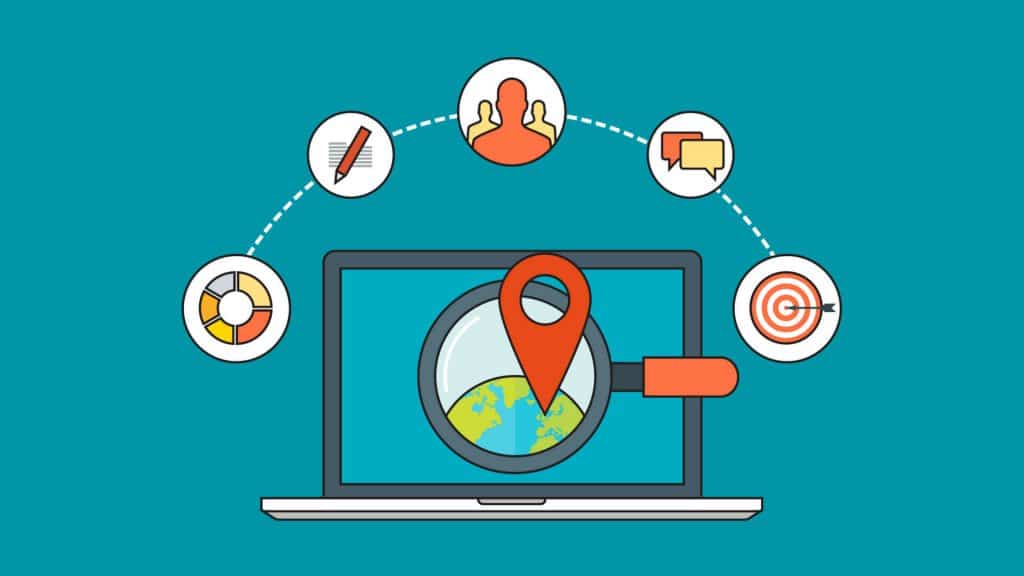SEO for Small and Mid-sized Businesses

As a proud owner of an SMB (Small & Mid-sized Business), you’re bound to have a never-ending task list. You have several duties to take care of 24/7 – between stepping into your store in the morning to turning the lights off before you leave. But dedicating time to market your business online in your busy schedule is vital to your business’ growth.
No matter how many advertisements and flyers you put up, it simply isn’t enough in this all-digital world. Giving your business a solid online presence to make sure consumers can find you online is a must. And adopting a local SEO strategy is a fantastic, easy way to give your business the online presence it deserves.
But First, What is Local SEO?
Local SEO is all about optimizing your online presence to make sure that your business appears on the search results for local search queries such as ‘restaurants near me’, or ‘plumbers in Sunnyvale, CA’. This includes rigging your website with good SEO practices, building citations/listings and generating reviews.
Why Your Business Needs Local SEO:
- With every passing minute, there are a million local searches being conducted. Nowadays, consumers even have the ease of conducting local searches on their mobile devices and tablets
- You’ll be one step ahead of your competition if your business is optimized for local searches
- You’ll build a solid online presence
- Local SEO is one of the most inexpensive methods to increase the number of impressions your business gets online
Local SEO Strategies to Implement

1. Optimizing Your Website
By optimizing your website, you are laying a foundation to improve your search rankings. Websites that are optimized to suit search queries will make a significant difference to your website’s organic search rankings as well. Here’s what you need to focus on:
- Add your keyword to your title tag
- Build your URLs to be concise and comprehensive
- Make sure your content is absolutely unique
- Make sure that your business contact information is present on your website
- Make sure that the navigation menus on your website are indexable for search engine spiders
2. Creating a Google My Business Profile

If you want to optimize your online presence for Google, your business must have a Google My Business account. Putting your business on Google Maps and Google My Business is primal to the other optimization activities you’d need to perform to improve your Google search rankings. You can additionally optimize your business for Near Me searches on Google Maps, link your Facebook/Angie’s List listing to your GMB profile, and put up images of your business online.
The more relevant and optimized your business is to a search term, the higher probability for your business’ GMB listing to show up on the user’s search engine results page.
3. Optimizing for Voice Search

Voice Search is an alternative search function to the common ‘type-in’ search habit. It is basically a search you conduct by speaking out your search query which will be recognised by your phone, and through that, a Google search can be run.
You can either click on the voice search option which is a tiny microphone icon, or you can use a wake phrase – a particular phrase (generally, “OK, Google”) that will activate voice search – to conduct your search. You can optimize your website for voice search using the following ways:
- Claim your Google My business listing
- Create a keyword strategy with long-tail keywords that mimic voice searches. You can begin by listing out questions and statements that people will use for their keyword search.
4. Getting Your Business Listed Online
One of the simplest local SEO implementations that all business owners need to do is getting their business listed on online directories and social media. When you are listed on all directories relevant to your niche, the likelihood of ranking on SERPs (search engine results page) increases.
Getting yourself listed on directories is the equivalent of looking through the YellowPages in the days gone by, and your business’ listing on important directories is one of the easiest ways to present yourself to a potential client.
Getting your business listed with the right NAP (name, address and phone number) is bound to increase the number of customers/calls that you will receive for your business. And it doesn’t stop there – since the probability of your business showing up in search results is more, it is almost the equivalent of advertising your business on these searches.
You can either manually add your listing to directories, or you can opt for the services of a listings management service.
5. Optimizing for ‘Near Me’ Searches
When a user conducts a Near Me search (e.g. a search like ‘bakeries near me’, for instance), the query is interpreted as a ‘location by intent’ search by Google. This means that Google will filter search results that are relevant to the user’s current location. You can leverage this feature to your advantage by making sure that your business is optimized for ‘Near Me’ searches.
In order to optimize your local SEO for this search function, you’ll need to do the following things:
– Have a well-kempt Google My Business and Google Maps page
– Maintain your business’ reputation too
– Super accurate NAP details updated on your business’ listings across the web
– Location-targeted ad campaigns on sites like Google, Facebook, etc.
– Backlinks with city in anchor text
6. Having a Mobile Responsive Website

In the present day, mobile devices are far too common to miss. In order to make the search experience as smooth as possible, search engines consider ranking websites that are optimized to fit mobile search queries without friction. It is therefore vital to building a mobile responsive site. Here’s what you need to focus on:
- Minify CSS
- Optimize on-page multimedia like images and videos, so that they don’t affect loading time.
- Optimize the loading time of your website. You can use Google’s PageSpeed Insights to find what’s slowing your site down.
- Optimize your blog with accelerated mobile pages (AMP).
Ever since Google rolled out an algorithm for the mobile-first index, leveraging mobile-responsive websites increases your chances of ranking on SERPs. It is crucial for your business to implement this for long-term ranking opportunities.
7. Blogging and Content Marketing

Starting a blog is a simple and cost-effective way to optimize your business for search. With a simple WordPress site, you can build content that is relevant to your business. This is a great method because as you are optimizing your SEO, you are also building a relationship with your consumer base by educating them with your content.
The incoming traffic to your site will add to the likelihood of building leads that you can further convert to customers. In addition to all of this, maintaining a blog will bring you long-term benefits: you can establish yourself as a thought leader or a subject matter expert in your niche.
The relevance of local search is increasing day-by-day. According to a research, at least four out of five consumers are using search engines to find local information. In addition to this, 88% of these searches are done on smartphones, and furthermore 18% of these searches end with the consumer making a purchase. By optimizing your business online for local searches, you’re harnessing this search habit to grow your business.
Suzana Joel
Latest posts by Suzana Joel (see all)
- SEO for Small and Mid-sized Businesses - December 6, 2017






This is a seriously powerful framework to follow. When we finally started crafting our SEO strategy around the 4 marketing stages we saw conversion rates increase big time.
Now we target the “attract stage” pages with keywords with phrases like “why…”, “reasons…”, “list of…”, “what is…”, “… definition”.
And we target the “convert stage” pages with “how to…”, “ways…”, “…guide”, “…tutorial” keywords.
Now we funnel the “close stage” to the right pages by optimizing with keywords like “…comparison”, “…price”, “…review”, “…cheap”, “…best”, “…top 10”
And the “delight stage” (aka the best stage) targets keywords with phrases like “…discount”, “…free shipping”, “…buy now”, “…coupon”, “…discount”, “…deal”.